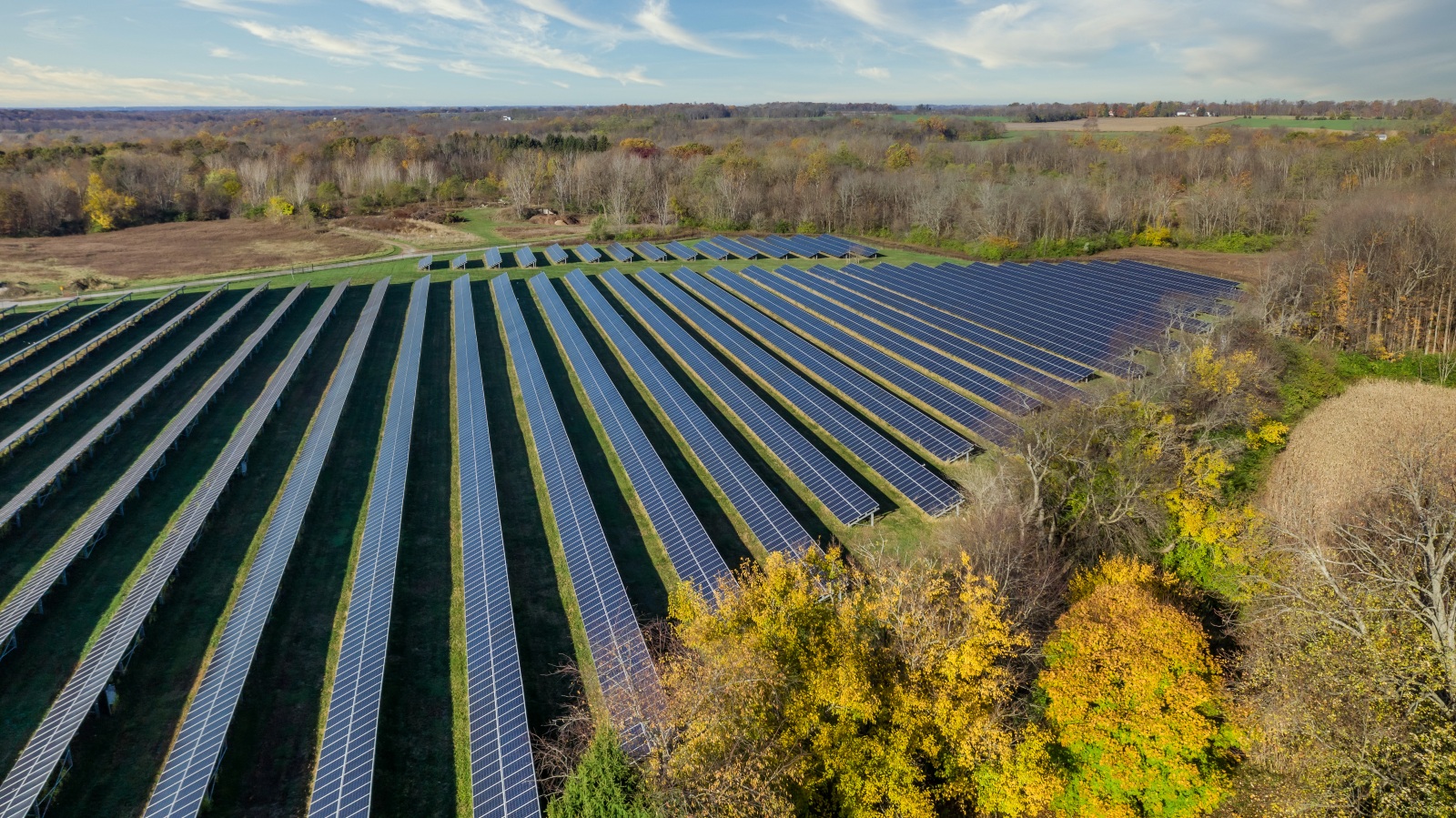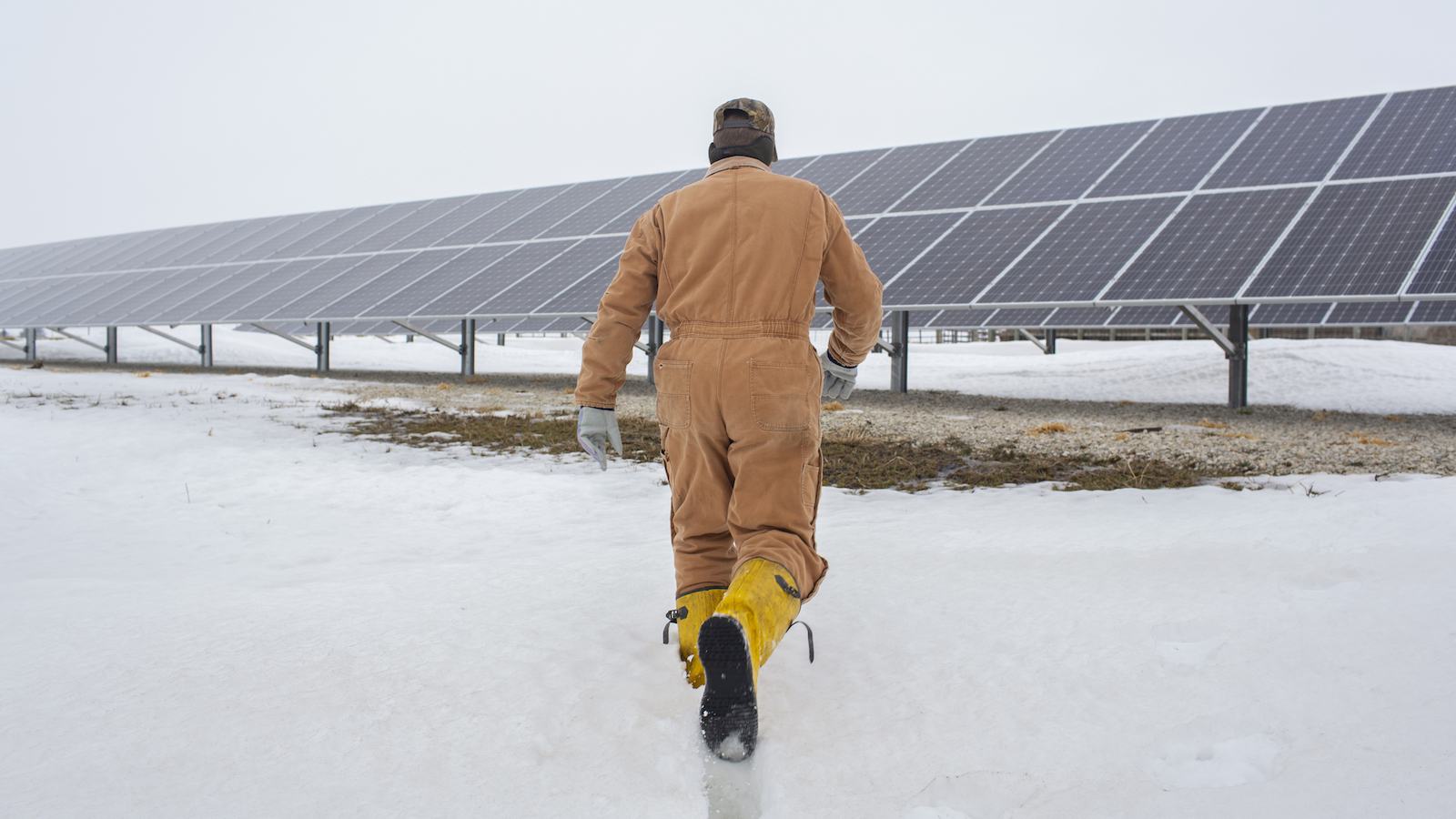In mid-March, about 80 people gathered in the auditorium of a local high school in Licking County, Ohio, a rural area about 40 minutes outside the state capital. The public hearing, set up to discuss a proposed 350-megawatt solar project, lasted more than four hours.
Supporters of the project said it would bring in much-needed tax revenue for local schools and promote energy independence in a state reliant on coal and natural gas. Opponents raised concerns about the loss of 1,880 acres of prime farmland, the impact on property values, and the potential environmental effects of the development.
“It’s becoming like the Hatfields and McCoys,” one resident told the Newark Advocate at the meeting, referring to the infamous feud between two families in Appalachia in the late 1800s. “This is destroying the community. Family members are pitted against each other. Church members are pitted against each other. And it’s neighbor against neighbor.”
The United States is experiencing a boom in utility-scale renewable energy projects, as solar and wind prices continue to fall and the Biden administration pushes for a fossil fuel-free electricity sector by 2035. Throughout the process, developers seeking vast expanses of cheap land for utility-scale facilities have faced pushback from the likes of Massachusetts fishermen, coal plant supporters, and environmental groups concerned about desert tortoises. Now, rural communities around the Midwest are mobilizing to restrict or ban large renewable energy projects. Experts say that some residents have been swayed by misinformation about the health impacts of solar and wind. But for most, the issue is tied to concerns about the loss of agricultural land in a region long-defined by its farming roots.
In March, researchers from Columbia Law School found that 121 local governments in 31 states have developed restrictions on new renewable energy projects, a 17.5 percent increase from just six months ago. About half of those local laws are in the Midwest. A congressman from Wisconsin proposed a nationwide ban on tax incentives that encourage renewable energy development on farmland, while community groups have packed local meetings to oppose solar and wind farms in Indiana, Ohio, and Iowa. One Michigan man filed recall petitions against all five members of his township board, saying they failed to properly regulate wind and solar development or “provide sufficient protections for the health, safety, and welfare” of residents.
Solar energy in particular has taken a lot of the heat, even in states that have long embraced wind. Iowa was the first state to generate more than 30 percent of its electricity from wind turbines, and has more wind energy installed than any other state except Texas. But while farming can take place alongside wind turbines, solar farms typically take agricultural land out of large-scale production. In response, Iowa legislators introduced a bill earlier this year that would have prevented solar farms from being built on land that’s considered particularly good for farming — about two-thirds of the state’s counties.
The bill would also require solar panel fields to be at least 1,250 feet away from the nearest neighboring landowner. Iowa law only requires oil and gas wells, by contrast, to be 330 feet from any nearby property.
Rural residents are far from united in this opposition, said Lindsay Mouw, a clean energy policy associate at the Nebraska-based nonprofit Center for Rural Affairs. Many support renewable energy projects because of the extra income they provide, especially as farming becomes less financially viable and soil becomes increasingly degraded. But while every rural landowner is able to decide for themselves whether or not to sell their land to renewable energy companies, those choices can affect others nearby who may not feel the same way, Mouw added.
“I think it’s more of a concern of neighboring landowners who do not want to see their farmland surrounded by solar panels and have this idyllic vision of Iowa … being a corn-producing state,” Mouw said.
Some Midwestern states, such as Indiana, have encouraged wind and solar development, only to face pushback from farmers and local officials who wanted local control over renewable projects. Other opponents are not actually farmers, but residents of suburban communities affected by urban sprawl from nearby metropolitan areas and concerned about the impact of renewable energy projects on their views and property values, said Kerri Johannsen, energy program director for the Iowa Environmental Council. (Though the impact on home values varies – studies from Europe found that wind turbines and solar panels decreased nearby home prices by 2 to 5 percent, but others from Massachusetts found no significant difference.)

Behind a lot of this opposition are social media campaigns spreading conspiracy theories and misinformation, particularly about the health effects of wind and solar. Fears about wind turbine noise causing birth defects or shadows from turbine blades inducing seizures – neither of which have scientific backing – permeate Facebook groups where residents organize against renewable projects, a report from National Public Radio found.
“It is a new process, and there’s just a lot of unknowns,” Mouw said. “It’s a big challenge for county commissioners to become experts on the renewable energy industry.”
Though restrictive bills such as those introduced in Iowa or Kansas haven’t seen much progress, opposition at the local level can still discourage renewable development. Some developers have canceled or moved projects in states like Indiana, where more than 30 counties have policies restricting solar or wind development, according to the Indianapolis Star-Tribune. And with pushback ramping up, the next question is whether the U.S. will be able to meet its renewable energy goals without local buy-in, Johannsen said.
“The transition to clean energy is so important for our future, that I do get concerned when I see policies proposed that could stop or stifle renewable development here,” Johannsen said. “At the same time, I’ve been immersed in some of these conversations long enough to feel optimistic that we’re going to be able to keep moving forward.”




